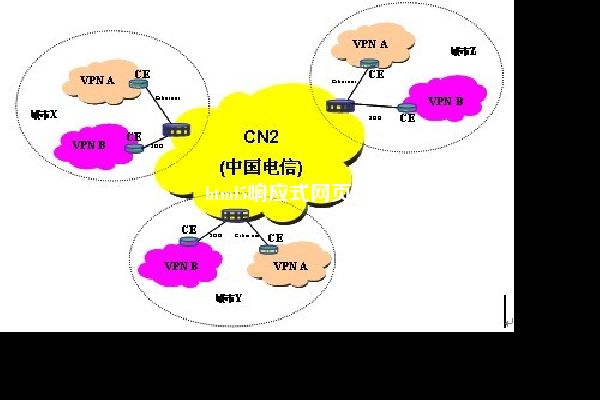HTML5响应式网页设计
随着移动设备的普及,越来越多的网站需要做到响应式设计,以便适应不同大小的屏幕和不同类型的设备。在这个环境下,HTML5的使用变得更加普遍。下面我们将探讨HTML5响应式网页设计的重要性,以及如何使用HTML5实现一个好的响应式设计。

HTML5是什么?
HTML5是超文本标记语言(HTML)的最新版本。HTML5将原本必须使用Flash或JavaScript等技术才能处理的复杂内容集成到了HTML标准中。HTML5具有更好的语义性、更好的可访问性、更好的多媒体支持、更好的离线和应用程序缓存等优点。
HTML5响应式设计的优势
当今,越来越多的网站访问量来自移动设备。如果你的网站不能提供一个好的移动体验,你就可能失去很多潜在的客户。为了解决这个问题,HTML5的响应式设计变得非常重要。以下是HTML5响应式设计的优势:
1. 良好的用户体验
HTML5能够适应不同屏幕的大小和分辨率,同时还能调整布局和内容,以提供更舒适,更方便的浏览体验。
2. 更好的搜索引擎优化
由于Google等搜索引擎更喜欢响应式设计的网站,他们通常会更加推荐响应式网站。这意味着,如果你的网站采用了HTML5的响应式设计,你在搜索引擎排名上的优势也将得到提升。
3. 更佳的性能
使用HTML5响应式设计可以减少网站请求的次数和大小,从而提高网站的性能,缩短页面加载时间。
HTML5的响应式设计实现
实现HTML5响应式设计需要以下步骤:
1. 利用CSS3媒体查询,设置不同屏幕尺寸下的样式表。
2. 使用流体网格布局或弹性盒子布局,以适应不同的屏幕尺寸。
3. 使用响应式字体大小,使字体随屏幕大小调整,使其更清晰易读。
4. 考虑弹出式菜单,使网站在小屏幕下更容易使用。
5. 使用响应式图片或资源,即根据不同屏幕使用不同大小的图片或资源文件,减小网页加载时间。
总结
HTML5响应式设计的实现越来越普遍,这是因为它可以带来更好的用户体验、更佳的搜索引擎优化和更好的性能。为了实现HTML5响应式设计,需要考虑一些关键技术,包括CSS3媒体查询、流体网格布局或弹性盒子布局、响应式字体大小和响应式图片或资源。如果你正在建立一个网站并希望它能够在不同大小的设备上提供最佳的用户体验,则HTML5响应式设计是一个非常重要的选择。
HTML5 Responsive Web Design
As mobile devices continue to become ubiquitous, more and more websites need to be designed with responsive design in mind so that they can fit different screen sizes and different types of devices. In this environment, the use of HTML5 has become more prevalent. Below, we will explore the importance of HTML5 responsive web design and how to use HTML5 to achieve a good responsive design.
What is HTML5?
HTML5 is the latest version of HyperText Markup Language (HTML). HTML5 integrates complex content that used to require technologies like Flash or JavaScript into the HTML standard itself. HTML5 has advantages such as better semantics, better accessibility, better multimedia support, and better offline and application cache.
Advantages of HTML5 Responsive Design
Today, more and more website traffic comes from mobile devices. If your website cannot provide a good mobile experience, you may miss out on many potential customers. To solve this problem, HTML5 responsive design has become very important. The following are the advantages of HTML5 responsive design:
1. Good user experience
HTML5 can adapt to different screen sizes and resolutions, and can also adjust layout and content to provide a more comfortable and convenient browsing experience.
2. Better search engine optimization
Because Google and other search engines prefer responsive websites, they usually recommend responsive websites more. This means that if your website adopts HTML5 responsive design, your advantage in search engine rankings will also be improved.
3. Better performance
Using HTML5 responsive design can reduce the number and size of website requests, thereby improving website performance and shortening page loading times.
Implementation of HTML5 Responsive Design
The implementation of HTML5 responsive design requires the following steps:
1. Use CSS3 media queries to set stylesheet for different screen sizes.
2. Use fluid grid layouts or flexible box layouts to adapt to different screen sizes.
3. Use responsive font size to adjust font size with screen size so that it is clear and easy to read.
4. Consider using a popup menu to make the website easier to use on small screens.
5. Use responsive images or resources, which means that different sizes of images or resource files are used depending on the screen, in order to reduce webpage loading times.
Conclusion
The implementation of HTML5 responsive design is becoming more and more prevalent because it can bring better user experience, better search engine optimization, and better performance. To implement HTML5 responsive design, you need to consider some key technologies, including CSS3 media queries, fluid grid layouts or flexible box layouts, responsive font size, and responsive images or resources. If you are building a website and want it to provide the best user experience on different size devices, then HTML5 responsive design is a very important choice.
5768 2243


网友留言: